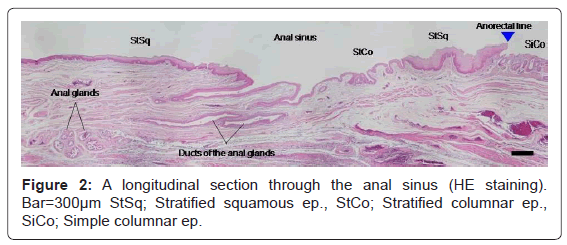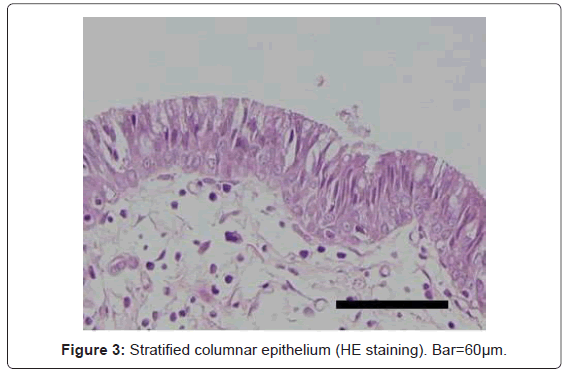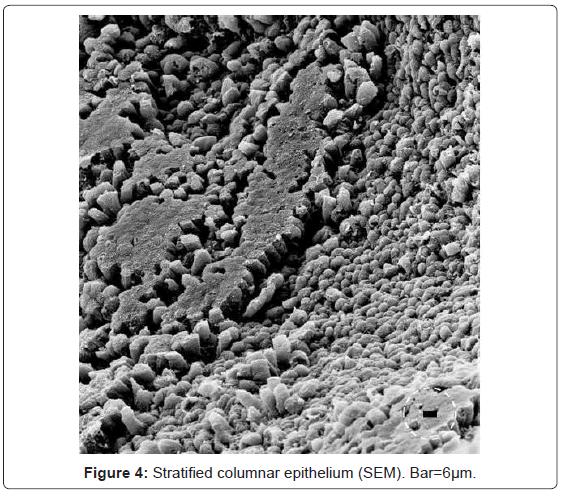Commentary Open Access
Marked Characteristics of the Anal Canal Related to Surgical Treatment
Tanaka E*, Noguchi T, Nagai K and Shimada T
Faculty of Medicine, Oita University, 1-1 Idaigaoka, Hasama-machi, Yufu-city, Oita, 879-5593, Japan
- *Corresponding Author:
- Tanaka E
Faculty of Medicine, Oita University
1-1 Idaigaoka, Hasama-machi
Yufu-city, Oita, 879-5593, Japan
Tel: +81-97-586-5854
Fax: +81-97-586-6449
E-mail: tanakae@oita-u.ac.jp
Received date: April 30, 2013; Accepted date: June 06, 2013; Published date: June 08, 2013
Citation: Tanaka E, Noguchi T, Nagai K, Shimada T (2013) Marked Characteristics of the Anal Canal Related to Surgical Treatment. J Gastroint Dig Syst S12:011. doi:10.4172/2161-069X.S12-011
Copyright: © 2013 Tanaka E, et al. This is an open-access article distributed under the terms of the Creative Commons Attribution License, which permits unrestricted use, distribution, and reproduction in any medium, provided the original author and source are credited.
Visit for more related articles at Journal of Gastrointestinal & Digestive System
In our previous study, the epithelium of the lower rectum and the anal canal in the adult human was examined by means of light and scanning electron microscopy (LM and SEM) [1]. The epithelium of the surgical anal canal was basically composed of the simple columnar epithelium and the stratified squamous epithelium, and their borderline was the anorectal line. We found no evidence demonstrating the presence of the anal transitional zone, whereas the duct of the anal gland, the anal crypt and sinus exceptionally consisted of the stratified columnar epithelium.
The anorectal line was the line at which the simple columnar epithelium in the rectum came to an end. Accordingly, it seems reasonable that the anorectal line is regarded as the terminal of the large intestine. In addition, the anorectal line might be the boundary between the endodermal part and the ectodermal part of the anal canal. We proposed that the area from the anorectal line to the anal intersphincteric groove with the internal anal sphincter should be considered and treated as an organ against the rectum (like the esophagus against the stomach). Because the epithelium of this area was basically composed of one epithelial type and accompanied by the lamina muscularis mucosae. When we temporarily defined this area as ‘the anal canal’, it seemed to be simple and easy to recognize. Figure 1 is a simplified schema showing the epithelium of the surgical anal canal, based on LM and SEM images. Figure 2 shows a longitudinal section obtained through the anal sinus, which reveals the relationship among the anal glands, the duct of the anal glands, and the anal sinuses. Figures 3 and 4 show the stratified columnar epithelium [1]. In general, tumors in the anal canal were various in pathological types and patterns. This may arise from the presence of several epitheliums in the narrow area. The epithelium of ‘the anal canal’ was fundamentally composed of one epithelial type, the stratified squamous epithelium. However the existence of a series of secretory glands (the anal gland, the anal duct, the anal crypt and sinus) causes a wide variety of pathological features of malignant tumors in the anal canal. When we make clinical and pathological studies of cancers in the anal canal, we suggest that we should consider the marked characteristics of the origin.
‘The anal canal’ plays a role in continence as the internal anal sphincter. Fichera et al. performed a stapled IPAA with preservation of the anal transitional zone (ATZ), preservation of ‘the anal canal’ in our study, for ulcerative colitis [2]. The result was that preservation of the ATZ offered excellent defecatory function and quality of life. Intersphincteric resection (ISR) removes the internal anal sphincter; in a sense ISR removes ‘the anal canal’. Yamada et al. performed ISR for low rectal cancer and assessed the long–term results after surgery in terms of level of maintenance of the defecatory function etc [3]. As a result; defecatory function and continence after ISR were objectively good. We have no objection to the established theory that the internal anal sphincter collaborates with the external anal sphincter and the levator ani in continence. However we suppose that the anal sphincter might play a supplementary role. We are watching functional results of ISR with great interest.
References
- Tanaka E, Noguchi T, Nagai K, Akashi Y, Kawahara K, et al. (2012) Morphology of the epithelium of the lower rectum and the anal canal in the adult human. Med Mol Morphol 45: 72-79.
- Fichera A, Ragauskaite L, Silvestri MT, Elisseou NM, Rubin MA, et al. (2007) Preservation of the anal transition zone in ulcerative colitis. Long-term effects on defecatory function. J Gastrointest Surg 11: 1647-1652.
- Yamada K, Ogata S, Saiki Y, Fukunaga M, Tsuji Y, et al. (2009) Long-term results of intersphincteric resection for low rectal cancer. Dis Colon Rectum 52: 1065-1071.
Relevant Topics
- Constipation
- Digestive Enzymes
- Endoscopy
- Epigastric Pain
- Gall Bladder
- Gastric Cancer
- Gastrointestinal Bleeding
- Gastrointestinal Hormones
- Gastrointestinal Infections
- Gastrointestinal Inflammation
- Gastrointestinal Pathology
- Gastrointestinal Pharmacology
- Gastrointestinal Radiology
- Gastrointestinal Surgery
- Gastrointestinal Tuberculosis
- GIST Sarcoma
- Intestinal Blockage
- Pancreas
- Salivary Glands
- Stomach Bloating
- Stomach Cramps
- Stomach Disorders
- Stomach Ulcer
Recommended Journals
Article Tools
Article Usage
- Total views: 17190
- [From(publication date):
specialissue-2013 - Nov 25, 2025] - Breakdown by view type
- HTML page views : 12415
- PDF downloads : 4775




